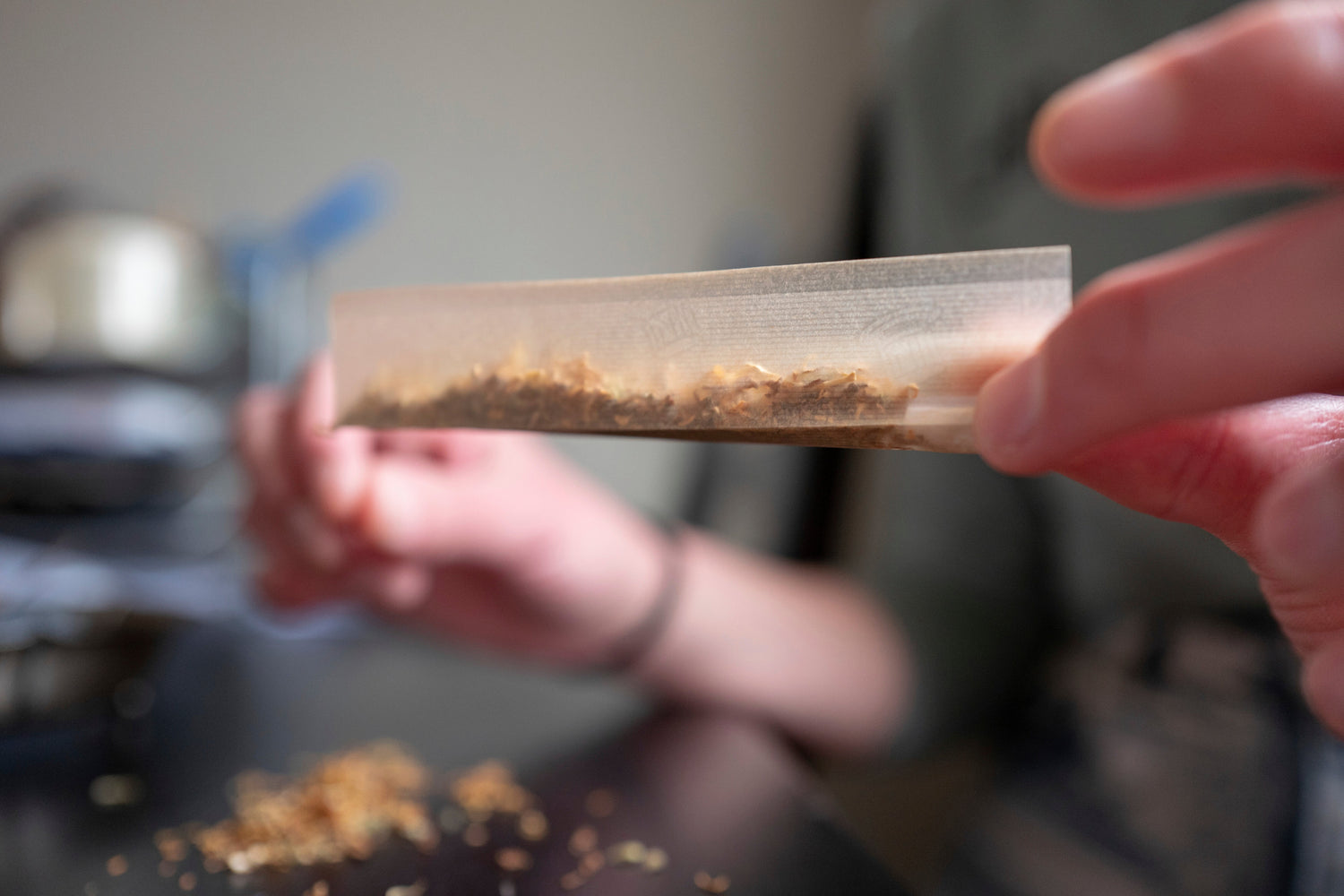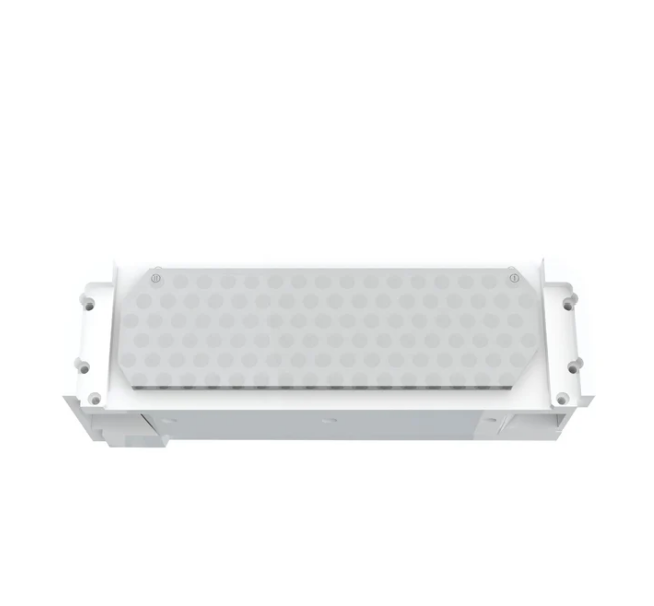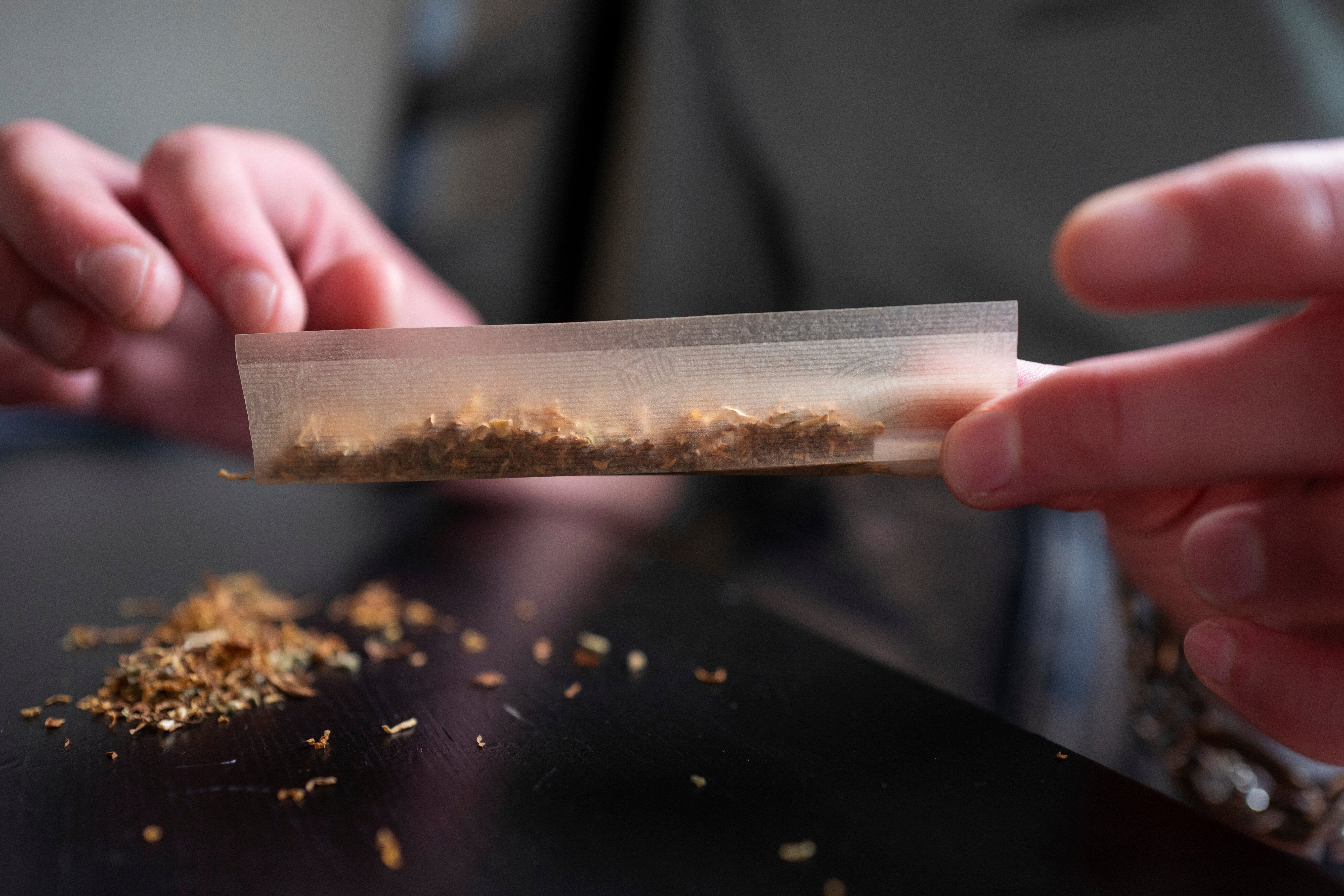The smoking accessories market has shifted toward organic products, with organic rolling papers gaining attention from health-conscious smokers and environmental advocates. With premium pricing and bold marketing claims, many consumers wonder whether these products deliver real benefits.
This guide examines the actual differences between organic and traditional rolling papers to help you make an informed decision.
What Are Organic Rolling Papers?
Understanding organic rolling papers requires examining both their certification standards and the materials used in their production.
Understanding Organic Certification
Organic rolling papers are manufactured without synthetic chemicals, bleaching agents, or artificial additives. Unlike conventional papers that undergo extensive chemical processing, organic variants maintain their natural characteristics.
These papers use organically grown materials like hemp, bamboo, or rice, cultivated without synthetic pesticides, herbicides, or chemical fertilizers. The manufacturing process avoids chlorine bleaching and other synthetic treatments common in traditional paper production.
Common Organic Materials
Hemp offers natural strength and slow-burning properties while maintaining a tan or brown color. Bamboo provides antimicrobial properties and can grow up to three feet per day. Rice papers offer ultra-thin construction and neutral flavor profiles.
Organic certification ensures materials come from farms practicing sustainable agriculture. This creates papers that burn more slowly and evenly due to natural fiber density and lack of chemical accelerants.
Manufacturing Process Deep Dive
The production process for organic papers differs significantly from conventional manufacturing, with strict controls at every stage to maintain organic integrity.
Cultivation and Harvesting
The production of organic rolling papers involves significantly different processes compared to conventional manufacturing, with each step carefully controlled to maintain the integrity of the organic material.
Organic hemp cultivation begins with certified organic seeds planted in soil that has been chemical-free for at least three years. Farmers employ natural pest control methods, such as the use of beneficial insects and companion planting, rather than relying on synthetic pesticides. Harvesting occurs at optimal fiber maturity, typically 70-90 days after planting, when fibers reach peak strength.
Processing and Pulping
The initial processing stage involves mechanical separation of fibers from the hemp stalk through a process called decortication. Organic facilities utilize water-based retting (or rotting) processes that rely on natural bacteria to break down the plant's woody core, thereby avoiding the use of chemical accelerants employed in conventional processing.
Pulping organic fibers requires precise temperature and pressure control, without the use of chemical additives. The process uses only water, heat, and mechanical action to break down fibers into papermaking pulp. Conventional facilities often add sodium hydroxide, sulfur compounds, or hydrogen peroxide to speed this process.
Quality Control and Certification
Quality control in organic facilities involves testing at every stage for chemical residues. Third-party certifiers conduct regular inspections, reviewing everything from water sources to equipment cleaning protocols. Any equipment used for non-organic materials must undergo thorough cleaning and a waiting period before being used for organic production.
The final papermaking stage uses traditional techniques with modern precision. Organic papers are often made on smaller-batch equipment that allows better control over thickness and texture. The natural gums used for adhesive strips are sourced from acacia trees or other certified organic sources, thereby avoiding synthetic alternatives.
Organic vs Regular Rolling Papers: Key Differences
The distinctions between organic and conventional papers extend beyond marketing claims to include measurable differences in materials, processing, and performance.
Material and Processing Comparison
|
Feature |
Regular Papers |
Organic Papers |
|
Materials |
Wood pulp, hemp (may include chemicals) |
100% organic hemp, bamboo, or rice |
|
Processing |
Bleached, chemically treated |
Unbleached, minimal processing |
|
Color |
Bright white |
Natural tan/brown |
|
Thickness |
Varies, often thicker |
Generally thinner |
|
Burn Rate |
Standard |
Typically slower |
|
Chemical Content |
May contain bleach, additives |
Chemical-free |
Manufacturing Differences
Regular papers are made by combining various fibers and undergoing chemical processing to achieve a consistent color and texture. Bleaching agents create the bright white appearance, while chemical treatments improve rollability.
Organic papers maintain natural fiber structure through minimal processing, preserving inherent properties while avoiding chemical residues. They focus on mechanical rather than chemical treatments, retaining natural color and texture.
Health Benefits of Choosing Organic Rolling Papers
Organic papers eliminate exposure to chlorine compounds that can produce harmful byproducts when burned. Traditional bleaching processes leave trace chemical residues that become airborne during combustion.
The pesticide and herbicide-free cultivation prevents exposure to agricultural chemicals that may persist through processing. Non-organic fibers can retain traces of these compounds, potentially affecting the smoking experience.
Organic papers also avoid industrial solvents, processing aids, binding agents, and burn accelerants that conventional papers sometimes contain. This means fewer unknown compounds enter your system during use.
Environmental Impact and Sustainability
The environmental advantages of organic papers span from cultivation through disposal, creating a comprehensive sustainability profile.
Cultivation Benefits
Hemp cultivation requires significantly less water than wood pulp production. Hemp reaches maturity in 3-4 months compared to years for trees, allowing multiple harvests annually with minimal water and no synthetic fertilizers.
Bamboo regenerates from existing root systems without replanting, making it an exceptionally sustainable option. The chemical-free processing reduces water pollution and soil contamination while eliminating the need for extensive wastewater treatment.
Biodegradability
Organic papers biodegrade completely without harmful residues, unlike some conventional papers containing synthetic components resistant to natural decomposition.
Taste and Smoking Experience
Organic papers produce less ash and burn more completely, leaving fine, light-colored residue that disperses easily. The consistent fiber density provides even heat distribution, preventing hot spots that create harsh tastes.
The absence of chemical treatments allows subtle flavors in premium materials to emerge clearly. Many organic papers offer a slightly more grippy texture for easier rolling, particularly beneficial with finer materials.
Temperature control improves due to consistent burning, resulting in smoother draws throughout sessions.
Rolling Technique Differences
Organic papers require specific handling approaches due to their natural characteristics and moisture sensitivity, which differ from conventional paper techniques.
Moisture Management
Organic papers require slightly different rolling approaches compared to conventional papers due to their unique fiber characteristics and moisture sensitivity.
Moisture management becomes crucial with organic papers. These papers absorb humidity more readily than chemically treated alternatives, affecting their flexibility and tear resistance. In humid environments with above 60% relative humidity, organic papers may become too pliable, making tight rolls difficult. Conversely, in dry conditions below 30% humidity, they can become brittle and prone to cracking.
Texture and Handling
The natural texture of organic papers affects the rolling technique. Hemp papers offer a more secure grip between fingers and material, enabling better control during the rolling process. However, this increased friction means slower, more deliberate movements work better than quick rolling motions that might cause tearing.
Organic papers often require less moisture on the gum strip for proper adhesion. Over-moistening can cause the paper to weaken or the gum to spread beyond the intended seal area. A light touch with the tongue tip usually provides sufficient activation, unlike some conventional papers that need more thorough moistening.
Packing and Burn Considerations
The slower burn rate of organic papers affects packing density requirements. Looser packing works better with organic papers since their natural burn characteristics prevent the rapid burning that might occur with conventional papers. Overpacking can restrict airflow and cause uneven burning or frequent relighting.
Beginner rollers often find organic papers more forgiving because the natural texture provides tactile feedback during the rolling process. The paper "grips" the material better, reducing the likelihood of contents spilling during the rolling process. However, the thinner profile of many organic papers requires gentler handling to prevent tears.
Advanced techniques, such as backrolling, work exceptionally well with organic papers due to their clean-burning characteristics. The lack of chemical additives means burning off excess paper produces minimal harsh smoke or unwanted flavors.
Who Should Choose Organic Rolling Papers?
Medical cannabis patients often prefer organic papers to minimize chemical exposure while managing health conditions. Those with respiratory sensitivities or autoimmune disorders frequently experience fewer irritations.
Premium material users choose organic papers to protect their investment in expensive herbs. Daily users benefit most from cumulative health advantages, while occasional users might not notice enough difference unless they prioritize environmental impact.
Collectors and social smokers often prefer the cleaner appearance and premium impression of organic papers.
How to Choose the Right Organic Rolling Papers
Paper weight affects performance. Lightweight papers (10-12 gsm) offer minimal flavor interference but require gentle handling. Medium-weight papers (13-15 gsm) provide better durability while maintaining good burn qualities.
Natural acacia gum provides strong adhesion and burns cleanly. Check the packaging freshness and regional availability before committing to a specific brand. Test small quantities before bulk purchases.
Quality Testing and Verification
Verifying authentic organic papers requires understanding certification standards and recognizing quality indicators that separate genuine products from misleading marketing.
Certification Standards
Verifying genuine organic rolling papers requires understanding certification standards and recognizing quality indicators that distinguish authentic products from misleading marketing.
Legitimate organic papers display specific certification logos from recognized bodies. In the United States, look for USDA Organic certification, which requires annual inspections and detailed documentation of the entire supply chain. The certification number should be traceable through the USDA database for verification.
European organic papers typically carry EU Organic certification (the green leaf logo) or country-specific certifications, such as the Soil Association in the UK or Ecocert in France. Each certification maintains public databases where consumers can verify manufacturer claims.
Laboratory Testing
Laboratory testing provides the most reliable verification method. Authentic organic papers should show zero detectable pesticide residues, heavy metals at levels below specified limits, and the absence of chlorinated compounds. Many reputable manufacturers publish third-party test results on their websites or provide them upon request.
Quality Indicators
Physical quality indicators help identify well-manufactured organic papers. Consistent thickness throughout the paper, smooth edges without microscopic tears, and uniform natural coloring without blotches indicate proper production standards. Poor quality control often appears as variations in paper thickness or irregular fiber distribution.
Storage and Preservation Guide
Proper storage significantly affects organic paper performance and longevity, with natural compositions making them more sensitive to environmental conditions than conventional papers.
Environmental Conditions
Proper storage significantly affects the performance and longevity of organic rolling papers, with their natural composition making them more sensitive to environmental conditions than conventional papers.
Humidity control represents the most critical storage factor. Optimal humidity levels range between 45 and 55% relative humidity. Above 60% humidity, organic papers absorb moisture and become overly pliable, making rolling difficult and increasing the risk of tearing. Below 35% humidity, papers become brittle and prone to cracking during handling.
Temperature stability prevents degradation of natural fibers and adhesive gums. Storage temperatures between 65-75°F (18-24°C) maintain optimal paper characteristics. Extreme temperatures above 85°F can cause gum strips to become sticky or separate, while freezing temperatures can make papers brittle.
Light and Air Protection
Light exposure breaks down natural fibers over time. UV radiation degrades organic materials faster than synthetic alternatives, causing discoloration and weakening. Store papers in dark locations or opaque containers to prevent photodegradation.
Air circulation prevents mold and mildew growth while avoiding excessive moisture loss. Sealed containers work well for short-term storage, but long-term storage benefits from occasional air exchange. Avoid completely airtight storage for periods exceeding six months.
Container Selection and Shelf Life
Container selection affects preservation quality. Food-grade storage containers, cedar boxes, or specialized paper storage tubes provide ideal environments. Avoid plastic bags for long-term storage, as they can trap moisture and promote mold growth.
Shelf life varies by paper type and storage conditions. Hemp papers typically maintain quality for 2-3 years under optimal conditions, while bamboo papers may last slightly longer due to natural antimicrobial properties. Rice papers show shorter shelf life, usually 18-24 months.
Signs of degradation include yellow or brown discoloration, musty odors, brittleness, or visible mold spots. Papers showing these signs should be discarded immediately, as they can affect taste and potentially pose health risks.
Common Myths About Organic Rolling Papers
Organic papers aren't always brown - some use natural whitening processes with hydrogen peroxide instead of chlorine. Modern organic papers stick as well as synthetic alternatives when properly activated.
Not all organic papers cost significantly more, as increased competition has reduced prices. Organic papers vary significantly in their characteristics, depending on the base materials and manufacturing process. Organic certification doesn't automatically guarantee superior quality beyond chemical avoidance.
Advanced Troubleshooting Guide
Even high-quality organic papers can present challenges that require specific solutions based on their natural characteristics and manufacturing differences.
Common Rolling Issues
Even high-quality organic papers can present challenges that require specific solutions based on their natural characteristics and manufacturing differences.
Tearing issues often result from improper handling or exposure to adverse environmental conditions. If papers tear frequently during rolling, check humidity levels - papers may be too dry. Slightly increase ambient humidity or briefly expose papers to bathroom steam. For overly moist papers causing tears, place them in a dry environment for 30-60 minutes before use.
Uneven burning problems typically stem from packing inconsistencies or moisture variations within the paper. Organic papers are more sensitive to uneven moisture distribution than conventional papers. If one side burns faster, the paper may have absorbed moisture unevenly. Store papers in consistent conditions and avoid touching them excessively before rolling.
Adhesion and Taste Problems
Poor adhesion failures usually indicate insufficient or excessive moisture on the gum strip. Organic gums require less saliva than synthetic alternatives - a light touch often suffices. If adhesion remains poor, check gum strip integrity. Damaged or old gum strips may need replacement papers.
Harsh taste despite organic certification can result from several factors. Old papers may develop off-flavors from improper storage. Papers stored near strong odors absorb them readily. Check storage conditions and replace if papers smell musty or unusual.
Performance Optimization
Rolling difficulty with organic papers often improves with technique adjustments. Roll more slowly and use lighter pressure than with conventional papers. The natural texture provides better grip, so aggressive rolling isn't necessary. Practice with less expensive organic papers before using premium varieties.
Burn rate too slow or fast indicates material compatibility issues. Different organic papers work better with different herbs or tobacco. Experiment with paper weights and materials to find optimal combinations. Bamboo papers typically burn more slowly than hemp alternatives.
The Bottom Line: Are Organic Rolling Papers Worth It?
Yes, for most users, prioritizing health or environmental impact. The health advantages prove valuable for regular users, medical patients, or those with chemical sensitivities. Performance improvements in burn quality and flavor neutrality enhance the experience for users of premium materials.
Budget-conscious occasional users may find conventional papers adequate, while organic papers represent the best choice for regular users seeking optimal quality.
Companies like Futurola, with their commitment to premium materials and chemical-free manufacturing, demonstrate the industry's evolution toward higher standards that benefit all consumers.
Organic rolling papers offer genuine advantages beyond marketing claims, making them worthwhile for users who value health, environmental impact, and smoking quality.





LEAVE A COMMENT
All comments are moderated before being published.
This site is protected by hCaptcha and the hCaptcha Privacy Policy and Terms of Service apply.